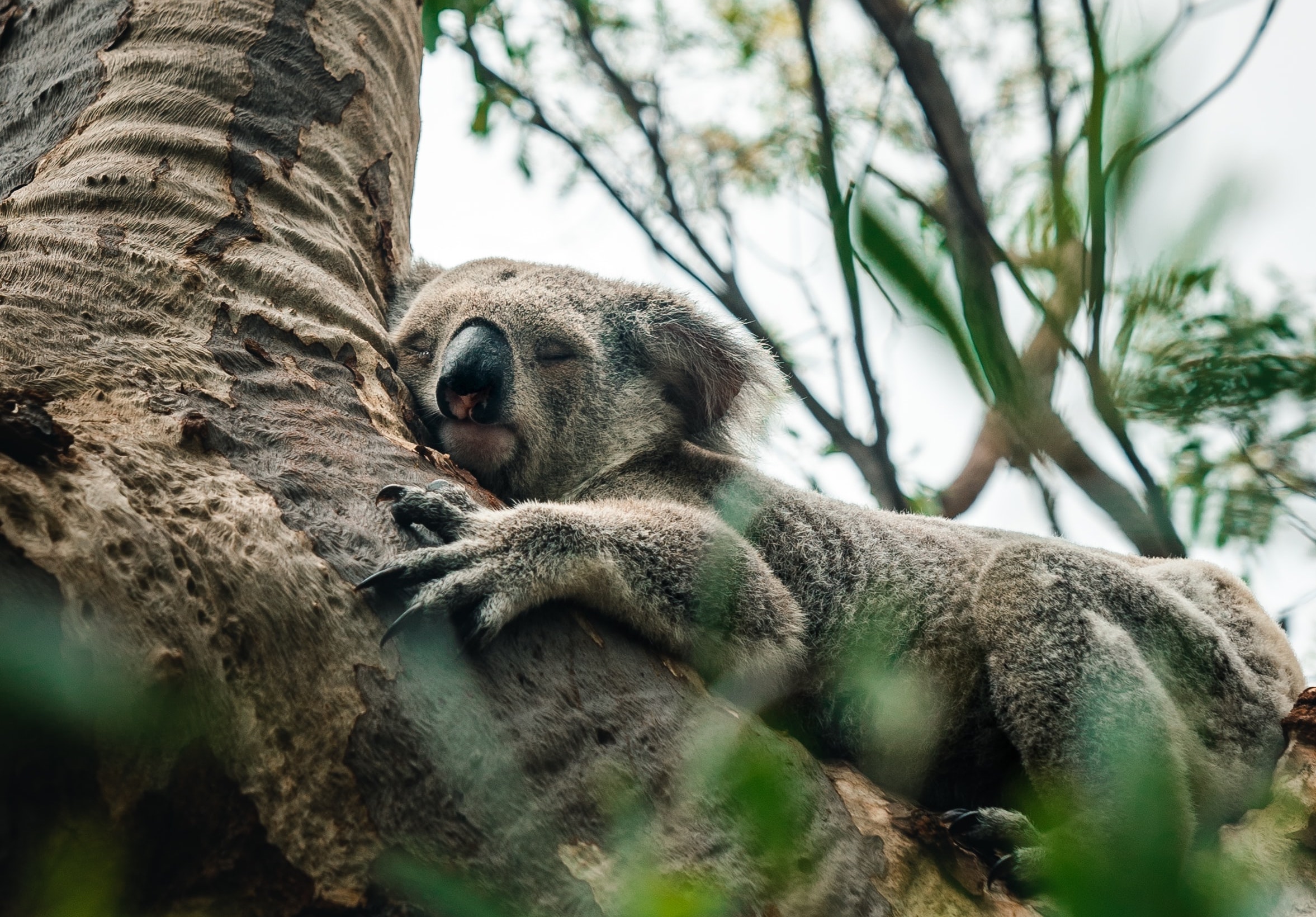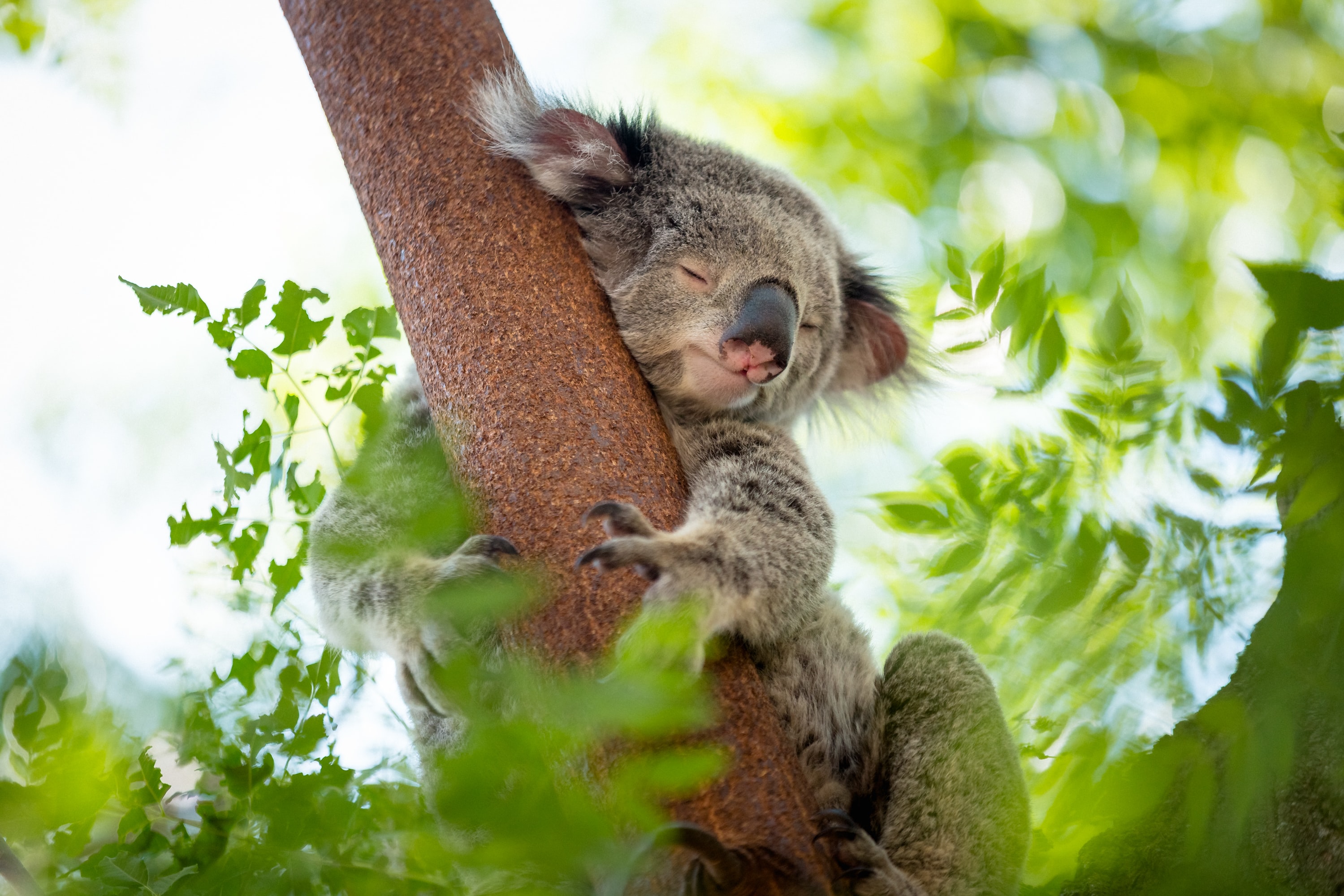First, the researchers looked into what postures koalas tended to be in during mild and hot temperatures.
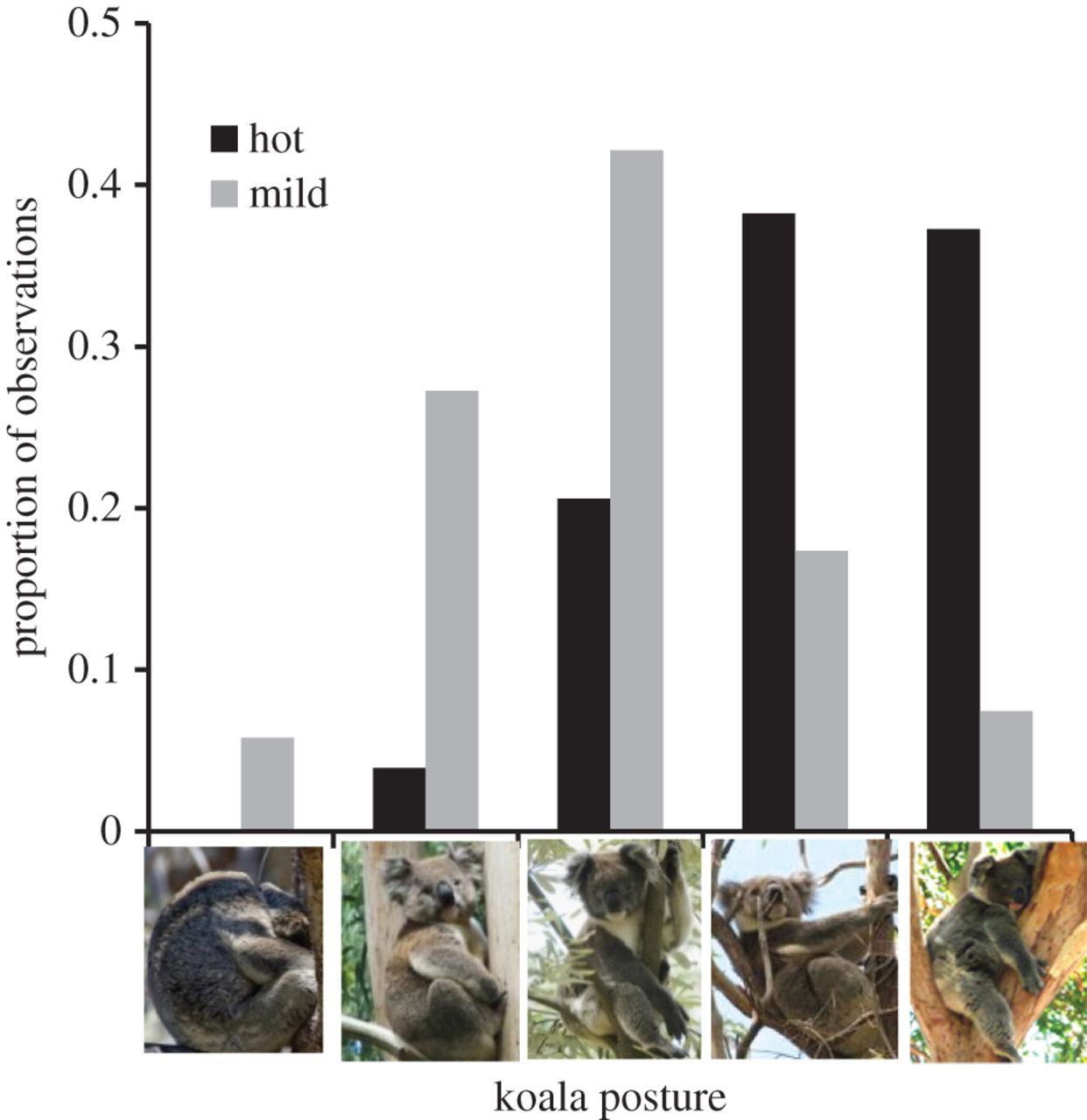
Postures of koalas during mild (grey bars) and hot (black) temperatures. Postures go from (left) least surface contact with the tree to (right) most surface contact with the tree; in other words, from least to most tree-hugging. Scale is measure in proportions, so the sum of the grey bars = 1 = 100% koalas on mild days, and the sum of the black bars = 1 = 100% of koalas on hot days. (Note: .1 proportion = 10% of koalas)
Q3: What patterns do you see in this data?
Researchers found that koalas tree-hug more in hot temperatures than in mild temperatures. They found a relationship between heat and tree-hugging behavior in koalas.
Researchers then looked through the thermal images they took of tree-hugging koalas.
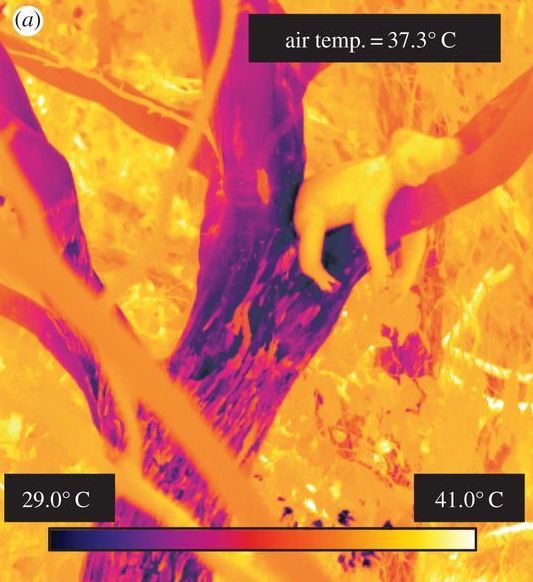
Thermal image of a koala hugging the cool lower limb of a tree, a posture often observed during hot weather.
Q4: Estimate the temperature difference between the koala and the tree.
Q5: Estimate the temperature difference between the tree and the surrounding air temperature.
Researchers found that the major tree species were significantly cooler than air temperatures. Koalas press against the cool surface of trees like humans flip a pillow to lay on the cool side on summer nights.
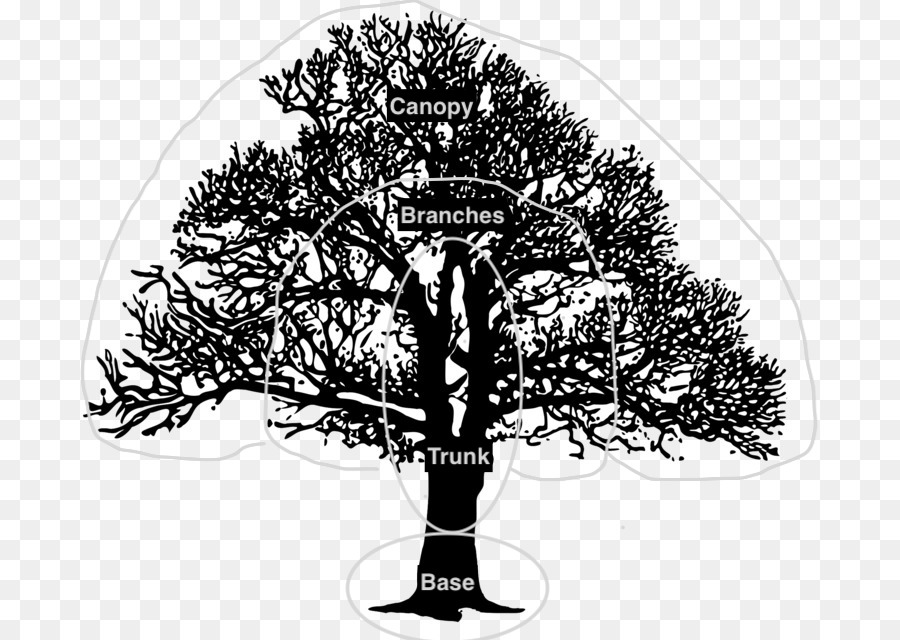
The parts of a tree, used in the following figure.
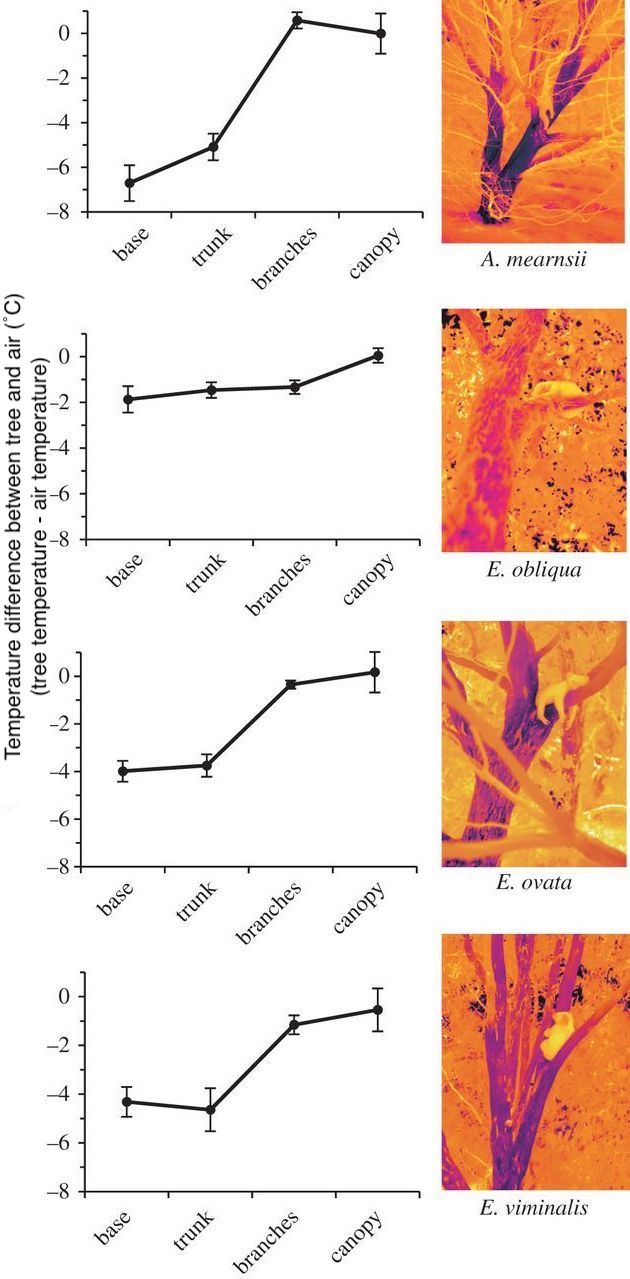
(Tree surface temperature - air temperature) of the base, trunk, branches, and canopy of the four main tree species (Acacia mearnsii, Eucalyptus obliqua, Eucalyptus ovata, Eucalyptus viminalis) in this experiment.
Q6: Describe the temperature difference between the base and trunk vs the branches and canopy of the trees. Hypothesize the reason(s) behind this temperature change.
Q7: During extreme heat events, where and on what tree species would you expect to see koalas?
Most likely, the tree trunk and base are cooler than the canopy due the canopy providing shade to the lower parts of a tree. Resulting from this, koalas were observed on the main trunks of trees much more frequently during hot weather (65%) than during mild weather (30%). Researchers found that as air temperature increased, koalas moved lower in trees.
The researchers also found that koalas significantly increased their use of Acacia mearnsii from 5% in mild temperatures to 29% in hot temperatures. This is most significant due to Acacia mearnsii being a non-food tree for koalas. This is important for conservation of wild habitat and zoo habitat: a suitable habitat for koalas includes non-food trees such as Acacia mearnsii for thermoregulation during extreme heat. A habitat comprised of Eucalyptus obliqua only would be unsuitable: providing food but lacking crucial arboreal cooling.
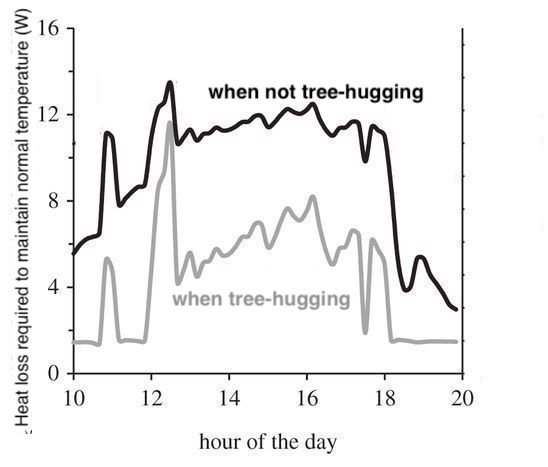
The amount of heat (W) koalas still need to lose to maintain a normal temperature differs with (grey) and without (black) tree-hugging behavior on an Acacia mearnsii tree on a hot day. The required heat loss is estimated using an energy budget model that accounts for heat gains and losses. Watts (W) are a measure of energy (in this case, heat) transfer over time. We can see that tree-hugging keeps koalas cooler.
Q8: Is tree-hugging a successful heat-loss strategy for koalas?
This study found evidence of substantial heat loss from tree-hugging behavior. In fact, the researchers found that tree-hugging could reduce or event prevent the need for evaporative cooling (sweating in humans, panting in koalas). Evaporative cooling has limited effectiveness and koalas can easily become dehydrated if they have to release a lot of heat through panting. The researchers estimated that required evaporative heat loss (required panting) for a tree-hugging koala in an Acacia mearnsii tree was less than half that of a koala not tree-hugging.
Q9: How can this study be informative to people helping conserve or living on land populated by koalas?
Q10: Design an experiment which builds on this study's findings.
